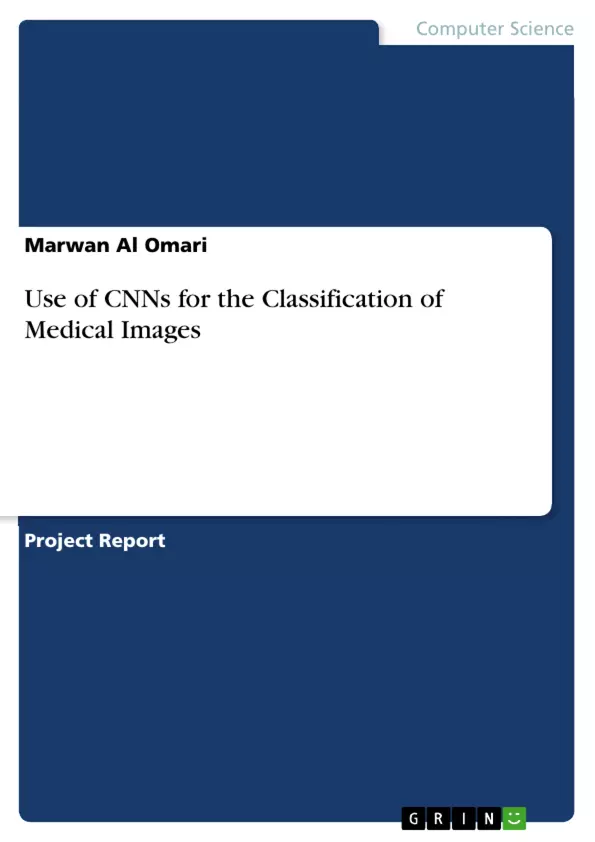This research project structures different enhanced architectures and models of CNNs using in particular the VGG16 model, for its featured simplicity and efficiency along with its pre-trained wights on ImageNet. The VGG16 models are well trained using transfer learning mechanism in fine-tuning the architecture on the ISIC2018 Task3 dataset. Then, the models are projected for skin cancer image classification in highlighting the state-of-the-art performance.
Deep learning models have showed great capabilities in data modelling on the various applications of image processing, including segmentation, classification, tagging, and many others. In particular, convolutional neural network (CNNs) has proved to be effective in capturing deep features on unstructured data that are well sited in the state-of-the-art. It is well competitive in comparison to the traditional algorithms of machine learning.
Inhaltsverzeichnis (Table of Contents)
- Acknowledgments
- Abstract (English)
- Abstract (Résumé en Français)
- XLIM Laboratory and Internship Presentations
- 1. Introduction
- 2. Related Work
- 3. Background
- 3.1 Deep Learning in Medical Diagnosis
- 3.2 Deep Learning architectures
- 3.3 Convolutional Neural Networks (CNNs)
- 3.3.1 Convolution Layer (C1, C3, and C5)
- 3.3.2 Pooling Layer (S2 and S4)
- 3.3.3 FCL (F6)
- 3.4 Transfer Learning (TL)
- 3.5 ISIC Dataset
- 3.5.1 Remarks of detecting a melanoma
- 4. Approach
- 4.1 Pre-processing
- 4.1.1 Image Resizing
- 4.1.2 Data augmentation
- 4.1.2 Data split
- 4.2 Algorithm
- 4.2.1 VGG16 LL (Last layer fine-tuning)
- 4.2.2 VGG16 FL (First layer fine-tuning)
- 4.2.3 VGG16 ML (Middle layers fine-tuning)
- 4.2.4 VGG16 FU (Full layers fine-tuning)
- 4.3 Evaluation Metrics
- 1) Accuracy (A)
- 2) Log Loss (LL)
- 3) Confusion matrix (CM)
- 4.1 Pre-processing
- 5. Experiments and Results
- 6. Conclusion
- 6.1 Future Works
- 6.2 Challenges
- References
Zielsetzung und Themenschwerpunkte (Objectives and Key Themes)
This report details the development and evaluation of convolutional neural network (CNN) architectures for the classification of medical images, specifically focusing on skin cancer detection. The main objective is to leverage the power of deep learning to achieve high accuracy in distinguishing between healthy and cancerous skin lesions using the ISIC2018 Task3 dataset.
- Application of Deep Learning in Medical Diagnosis
- Convolutional Neural Networks (CNNs) for Image Classification
- Transfer Learning and Fine-tuning for Improved Accuracy
- Evaluation Metrics for Assessing Model Performance
- Implementation and Results of VGG16 Architectures
Zusammenfassung der Kapitel (Chapter Summaries)
- Introduction: This chapter provides a general overview of the research project and outlines the problem of skin cancer classification. It also introduces the use of deep learning and CNNs as a potential solution.
- Related Work: This chapter reviews previous research efforts in the field of medical image classification, highlighting the use of deep learning techniques and various architectures. It also discusses the limitations and challenges faced by prior work.
- Background: This chapter delves into the theoretical foundations of deep learning in medical diagnosis. It introduces concepts such as CNNs, transfer learning, and the ISIC2018 Task3 dataset, which will be used in the study.
- Approach: This chapter describes the methodology used in the project, including image preprocessing, data augmentation, data splitting, and the choice of VGG16 as the CNN architecture. It also details the different fine-tuning strategies employed.
- Experiments and Results: This chapter presents the experimental setup, training procedures, and the results obtained from the evaluation of various VGG16 architectures using different fine-tuning strategies.
Schlüsselwörter (Keywords)
This research project focuses on Convolutional Neural Networks (CNNs), Image Processing, Image Classification, Deep Learning (DL), Transfer Learning, Skin Cancer Detection, ISIC2018 Task3 dataset, VGG16 architecture, fine-tuning, and evaluation metrics.
- Citation du texte
- Marwan Al Omari (Auteur), 2021, Use of CNNs for the Classification of Medical Images, Munich, GRIN Verlag, https://www.grin.com/document/1215084



